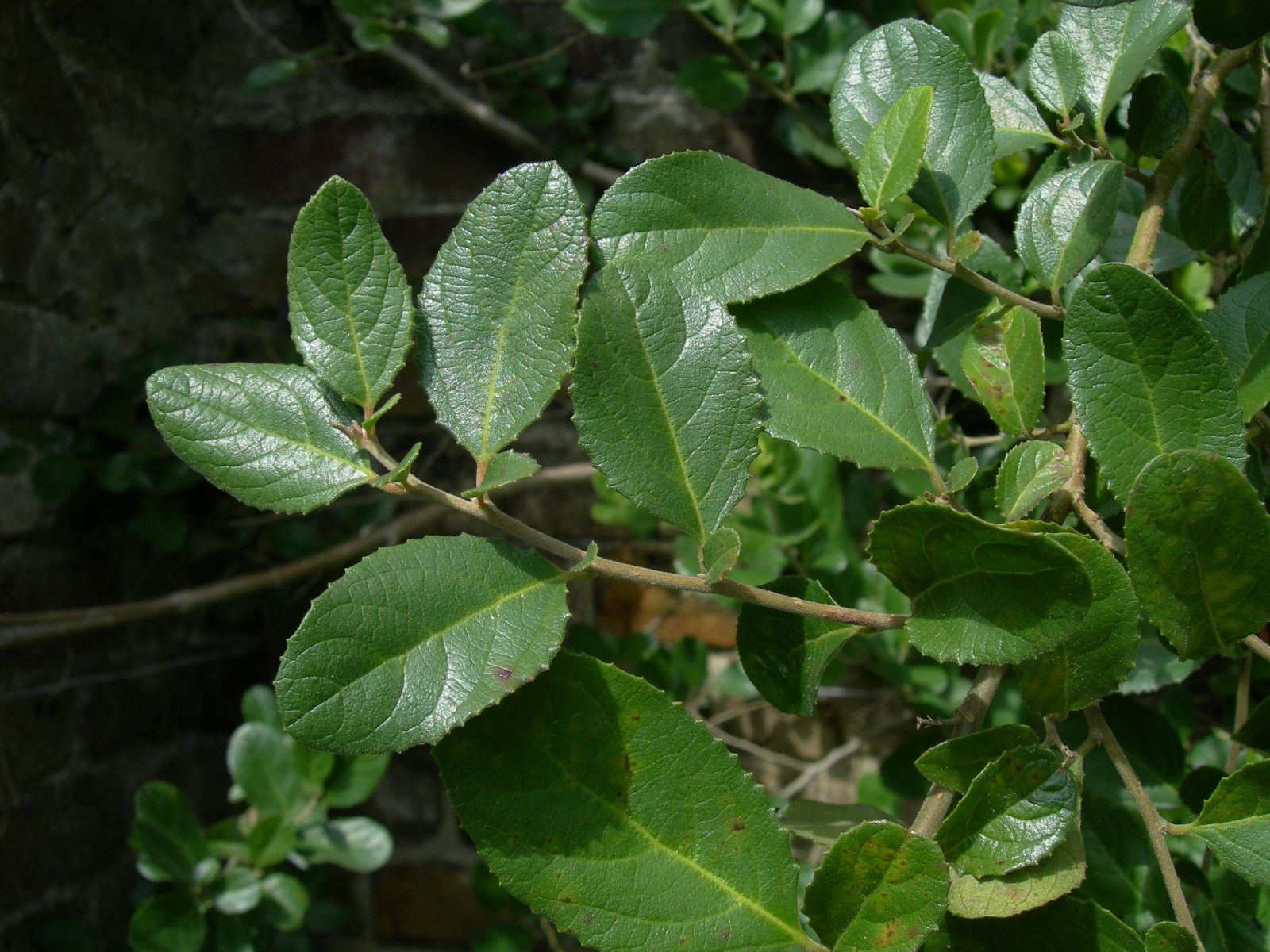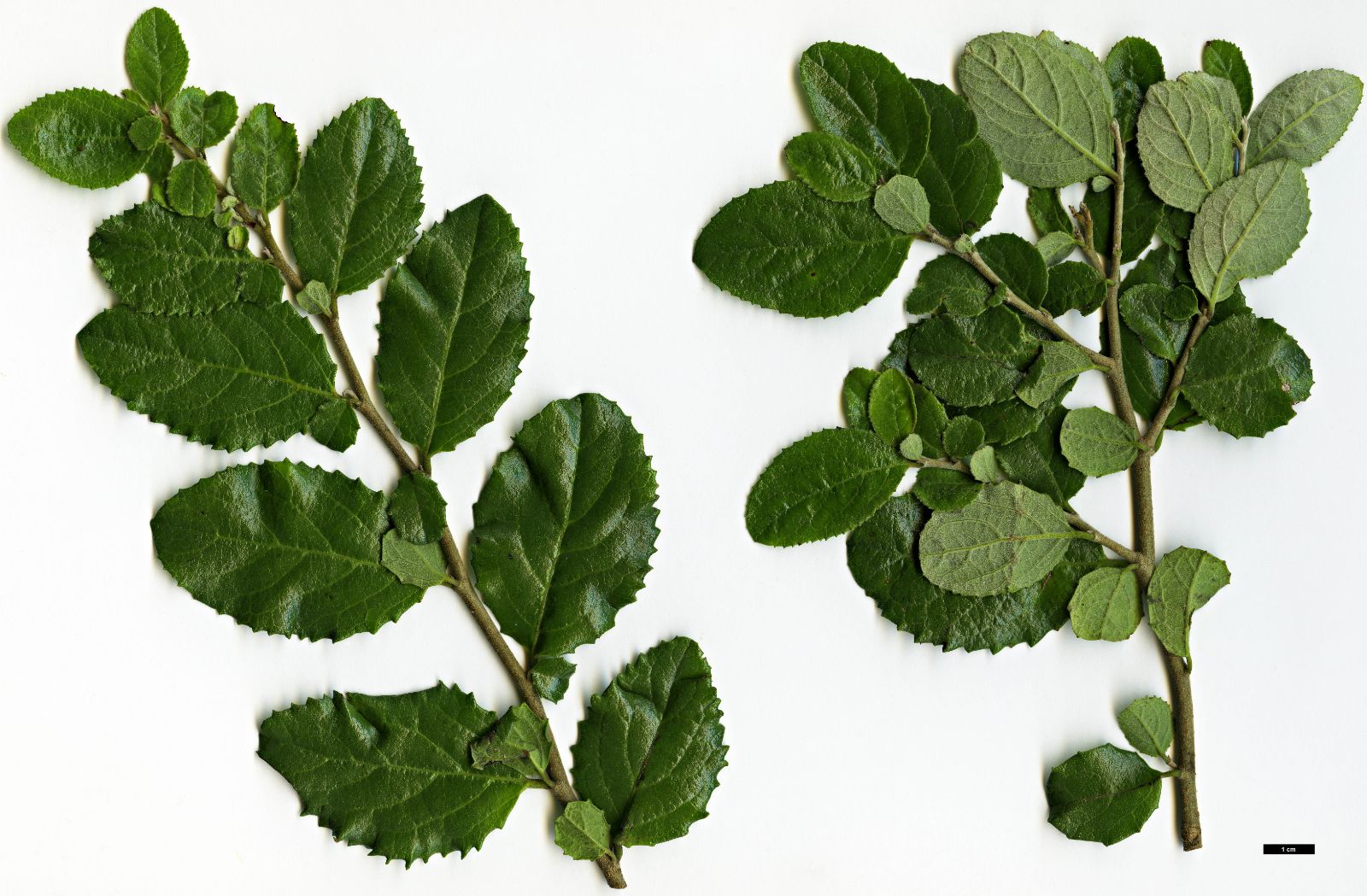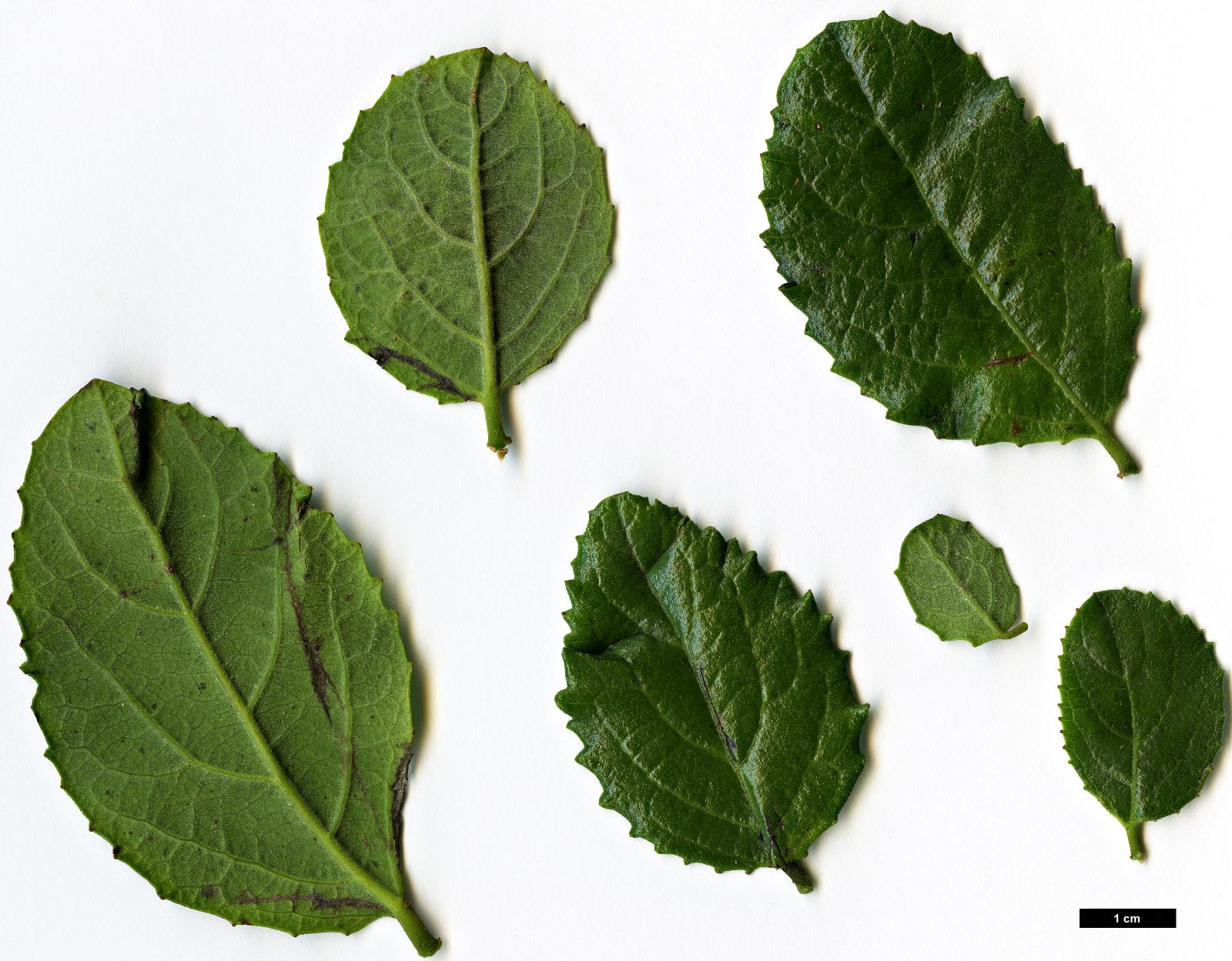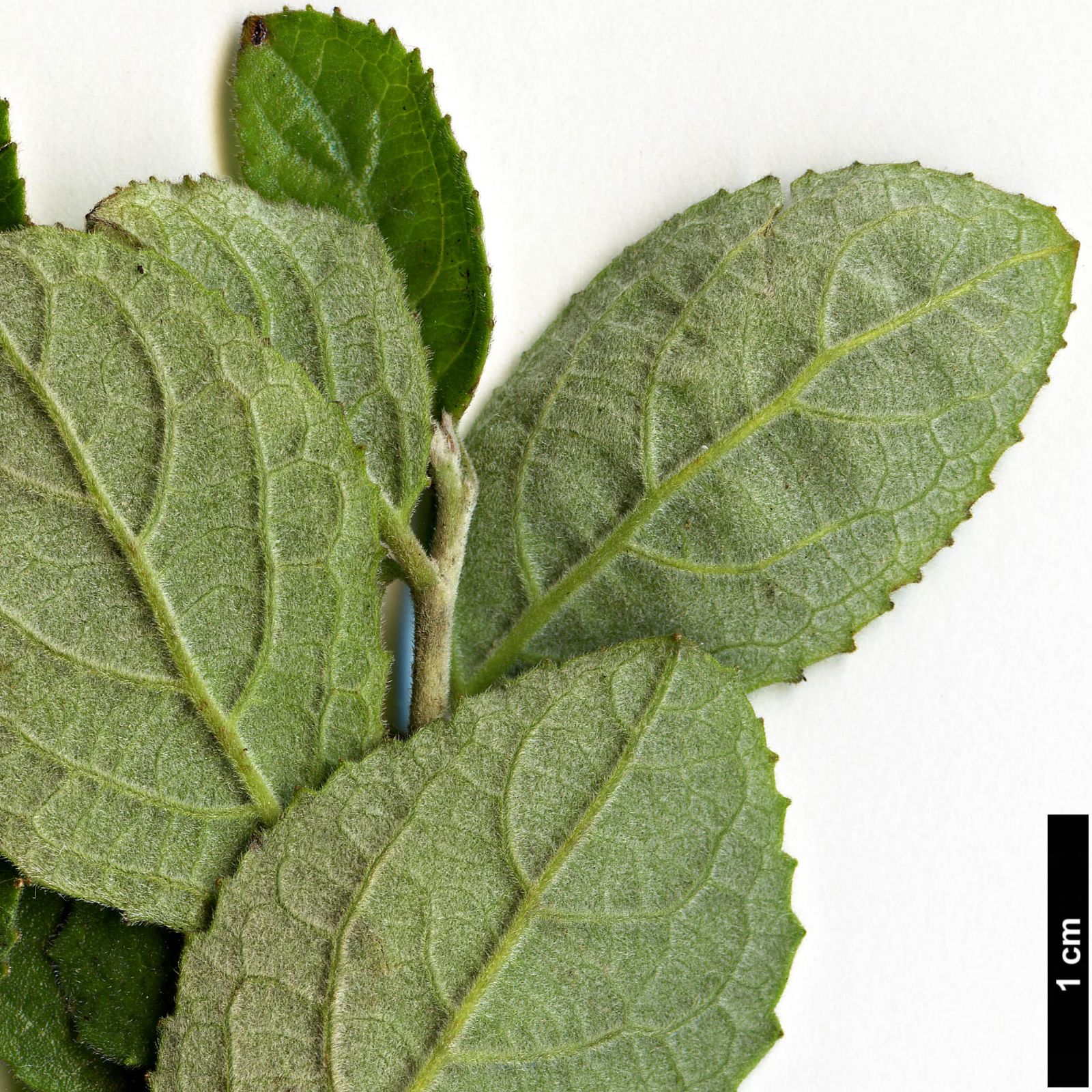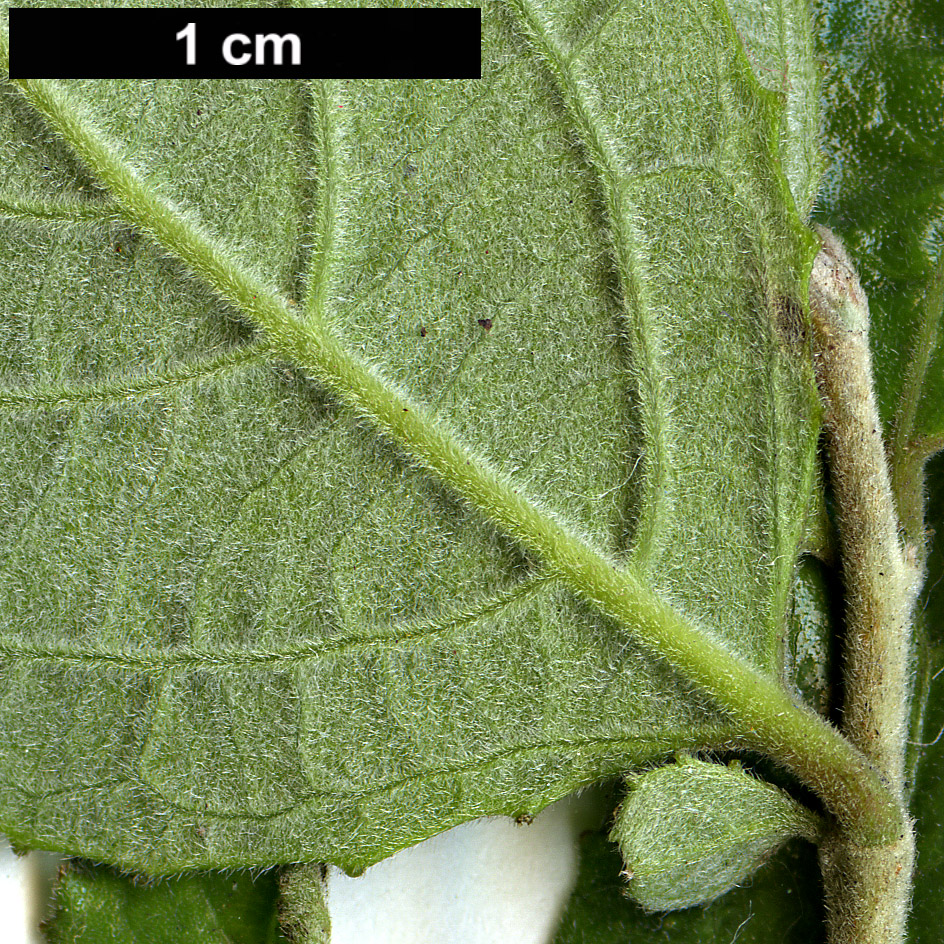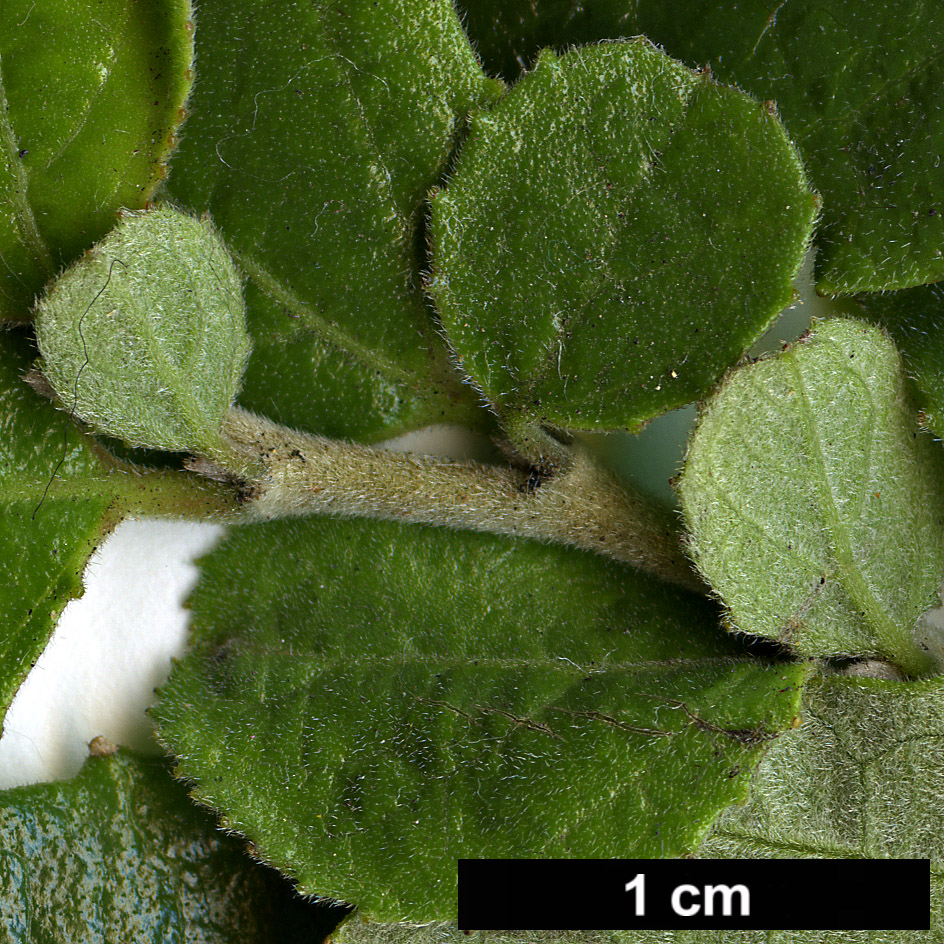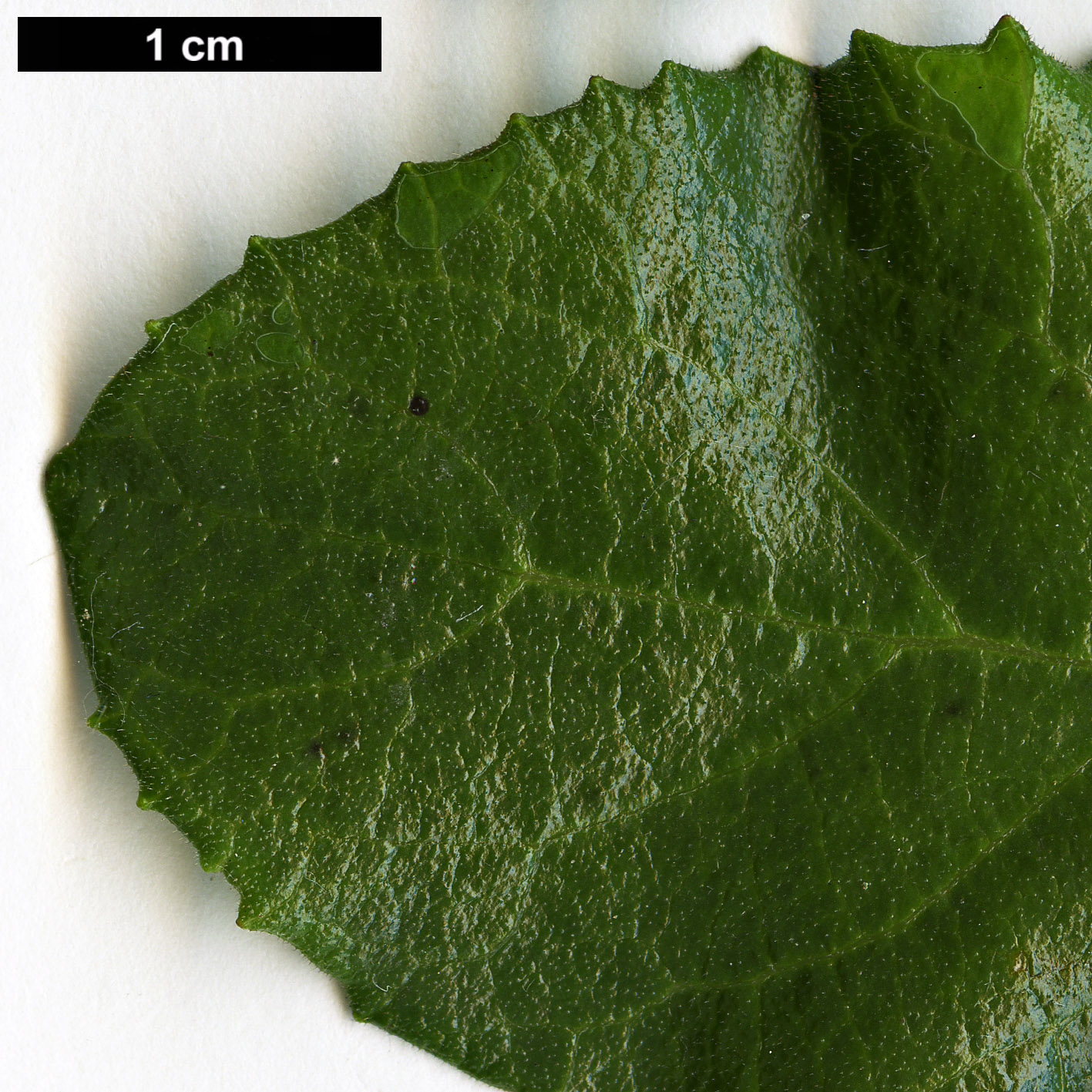Azara dentata
Credits
Article from Bean's Trees and Shrubs Hardy in the British Isles
Recommended citation
'Azara dentata' from the website Trees and Shrubs Online (treesandshrubsonline.
Genus
An evergreen shrub 8 to 12 ft high, sometimes a low tree, with downy branchlets. Leaves alternate, ovate or oval, 1 to 11⁄2 in. long, deep shining green above, very downy beneath, furnished with stipules; both the leaves and stipules are toothed. Flowers fragrant, borne on short, branching corymbs, the yellow stamens, as in A. petiolaris, giving the flower whatever beauty it possesses. A rather tender shrub, introduced from Chile about 1830. It is only hardy against a wall at Kew, and was killed or badly damaged in many gardens in the cold winters of 1961–3. It survived both at Edinburgh, however, and is 10 ft high there in a sheltered position. The leaves have a bitter taste.

